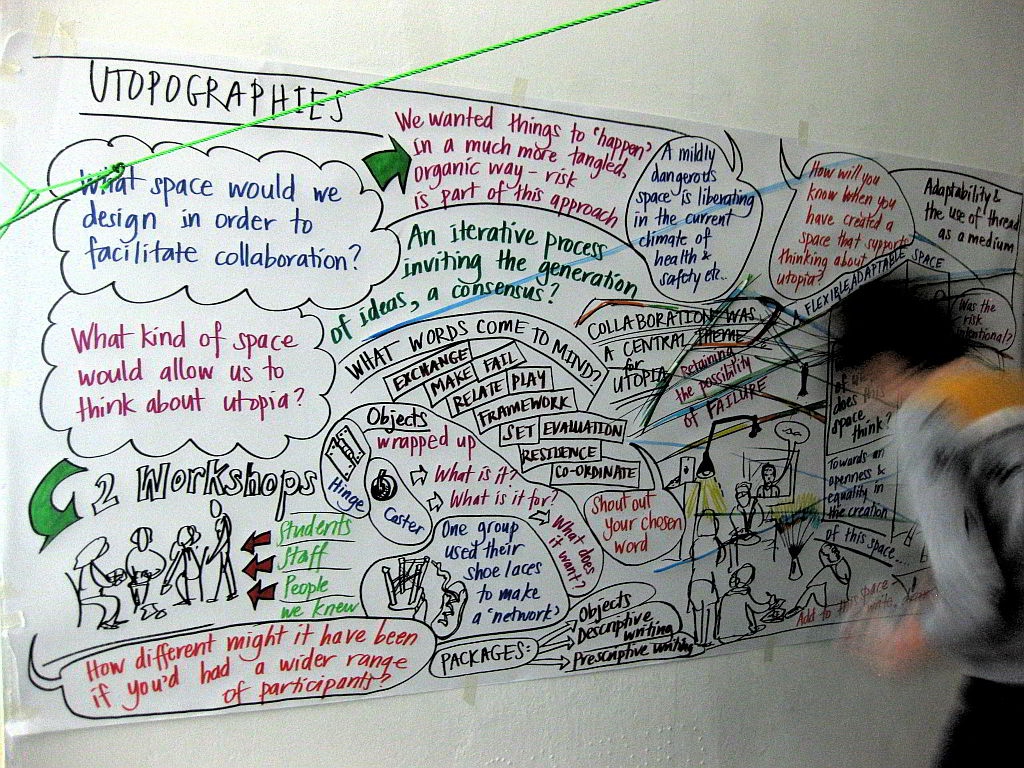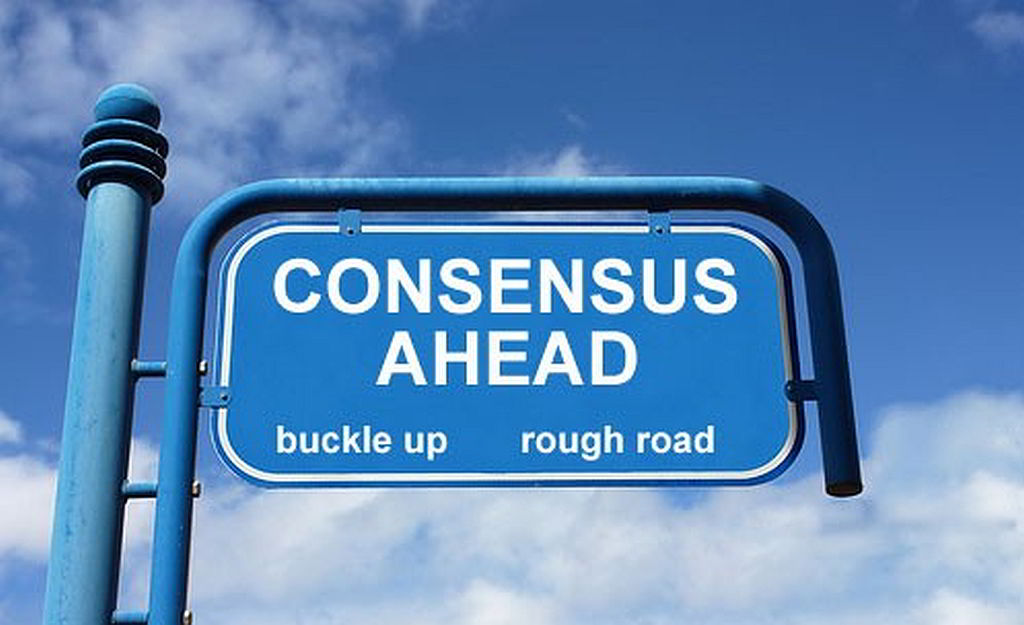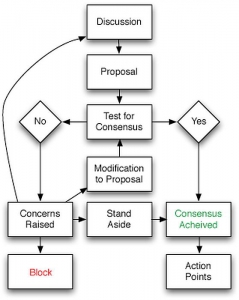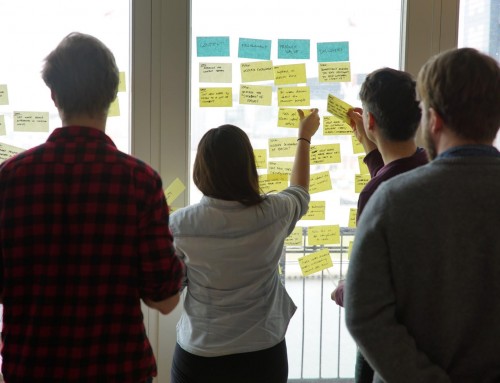Consensus Decisioning — How to Find Minimal Viable Decisions
Consensus-Based Decisions — And How To Facilitate Them
Every day every group makes decisions. Group decisions are very complex issues. The challenge is, you have to converge multiple individuals which each has possible diverging specific goals and objectives to the highest level of a minimal common and shared agreement.
Consensus is not unanimous agreement.
Participants may consent to a decision they disagree with but recognize it meets the needs of the group and therefore, give permission to.
Therefore, the most challenging part is, to get all group members to develop and agree to support a decision in the best interest of the whole.
In consensus-based group decisions not every group member might be happy equally with the resolution found. Instead, the group has to strive for an commonly "acceptable resolution, one that can be supported by everyone, even if it is not the «favourite» of each individual." (Wikipedia).
Finding consensus is a cooperative process in which the voters develop and agree to support a decision in the best interest of all. The group creates equally this minimal viable decision by discussing and arguing as many alternatives as possible until all in the group consent with the highest agreement possible to "the final" solution.
Consensus-Based Decision-Making versus Democratic Voting
What are the main differences between decisioning by consensus versus by democratic voting?
- A democratic voting process separates the voters into two parties: the majority and the minority. Democratic voting creates a situation in which there are "winners" and "losers".
If most of a group support the proposal then it will be voted in, and the concerns of the others who opposed it are ignored. - A consensus-based decision-making instead, is a cooperative process without "winners" or "losers".
The voters create the final decision by discussing and arguing equally as many alternatives as possible until the commonly committed consent with the highest agreement as possible is reached.
Every voter develops and agrees equally to support the decision found in the best interest of the whole.
Democratic Voting

Traditional "democratic" voting might force conflict and distrust because the "losers" feel disempowered by the decision-making process. And the most dangerous part in it:
- The majority sees their will as the will of the whole group.
- The majority expects that the minority accepts and carries out the decision, even if it is against their deeply held convictions and most basic needs.
- Both leads to the erroneous assumption, everyone would support the solution found because it was found "democratically".
Consensus-Based Decision-Making

In a consensus-based decision-making process, everyone knows
- ... there is a defined scale of agreement to the resolution found commonly within in the group.
- ... not all group members support with equal emphasis the common resolution found. Individual support can be measured with the "agreement scale".
- ... however, for all group members, there is a minimal level of agreement everyone is willing to commit.
Levels of Agreement
When a group is asked to take a decision, the members try to find a common level of agreement by either democratic voting or consensus-based decision-making. In case of consensus-based decisioning seldom all people agree equally to the decision found. Instead, they commit themselves to a level of personal agreement.In consensus-based decision-making, you can differentiate five possible levels of "agreement" to the decision found.
| Level 1: | Blocking: “I believe this proposal would be majorly detrimental to our group, because either it goes against our fundamental principles or it would lead to a disastrous outcome.” “I do not agree with the group's proposal. I feel the need to block its adoption and propose an alternative.” |
| Level 2: | Abstain: “I feel we have no clear sense of agreement among the group. We need to talk more before considering a decision.” |
| Level 3: | Stand Aside: “I have major concerns with the proposal, and agree to stand aside and let the group proceed with it.”
The choice to stand aside may be based on (but is not limited to) any of the following:
|
| Level 4: | Consent with Reservations: “I support the basics of this proposal, and have one or more minor unresolved concerns. I think this proposal is the best choice of the options available to us.” |
| Level 5: | Full Agreement: “I am enthusiastic about the group's proposal and am confident it expresses the best wisdom of the group.” |
Group Decision Characteristics
Consensus-based decision-making embraces individual perspectives, aims, and needs. It honors the contribution of each individual to the process. It builds on respect, trust, co-operation and mutual aid to achieve agreeable solutions for everyone concerned. In consensus-based decision-making every participant
In consensus-based decision-making every participant should
- ... agree as much as possible to the solution found. — Agreement Seeking.
- ... contribute to the shared proposal and shapes it into a decision that meets the concerns of all team members as much as possible. — Collaborative Principle.
- ... strive to reach the best possible decision for the team and all of its members, rather than competing for her own personal preferences. — Cooperative Principle.
- ... has the opportunity to present, and amend proposals with equal rights. — Egalitarian Principle.
- ... include as many other (external) stakeholders as possible to the consensus decision-making process, if needed. — Inclusive Principle.
- ... pull actively input and participation of all decision-makers needed. — Participatory Principle.
You see, these principles are fundamental for the collaboration of a self-organised team. — And they are congruent to the characteristics stated in the Wikipedia article aforementioned. — Surprise, surprise.
Rules To Use Group Decisions Formats
There is a certain process schema valid for all kinds of group decision processes:
- Introducing the Process: the facilitator raises the purpose of the session, explains the method to find consensus and the 5 levels of agreement.
- Discussing the item: When discussing the topic to be considered, the group identifies opinions and information. Often the general direction of the group and potential proposals for action become visible during the discussion.
- Creating the proposal: Based on the discussion either the facilitator or the group itself creates a proposal to be considered.
- Call for consensus: The facilitator calls for consensus on the proposal. Each group member has to state actively, whether she agrees, stands aside, or objects. In this step, the facilitator uses often Five Finger Voting, Thumb Voting or Constellation Game.
The facilitator counts the number of objections to determine if a certain threshold for approval is satisfied.
In case of consent, the facilitator asks the dissenters to share their concerns, so that any potential harms can be addressed/minimised. This should be done particularly if the threshold is consent and many voters stand aside. - Addressing of concerns: In the case a consensus is not achieved, each dissenter presents her concerns regarding the proposal. Potentially another round of discussion starts to address or clarify the concerns.
- Modifying the proposal: The group reworks the proposal — if needed, supported by the facilitator — to find alternatives which may address the concerns.
The process then returns to the call for consensus and the cycle is repeated until a satisfactory decision passes the consent threshold for the group.
When to use Group Decisions Formats
- Many people are involved in the decision-making process.
- All participants have to have to agree and commit themselves to certain degree.
- Diversity of players and their diverging aims and objections matters.
- The complexity of the issues to be resolved matters.
- To create a shared understanding of divergent objections,
- To convergent diverse thinking to a minimal acceptable solution agreed by everyone,
- To hear every voice in collaborative decision making.
- Identify what’s “behind” an issue.
Facilitator Role
- Supports the participants in a conflict-free and appreciative discussion process.
- Listens deeply, and creates a space where each participant can be deeply heard.
- Provides empathy, respect, and support for each participant’s contribution.
- Values each participant's contribution.
- Supports the group actively in
- collaboratively generating a proposal,
- identifying unsatisfied concerns, and then
- modifying the proposal to generate as much agreement as possible.
- When group generates resolutions or alternatives, the facilitator should
Group Decisions Formats
The complexity of group decisions ranges from easy to complex ones.
Note: This list is fed dynamically by my postings on this topic. — Bookmark this post to stay tuned for frequent updates!
Further Readings
- Consensus Decision Making. Seeds for Change. www.seedsforchange.org.uk/consensus
- Starhawk: The Empowerment Manual: A Guide for Collaborative Groups. November 2011.
: HORANCapitalAdv via flickr.com • Caelie_Frampton, via flickr.com • Neil Cummings, via flickr.com • Wikipedia, .








Leave A Comment